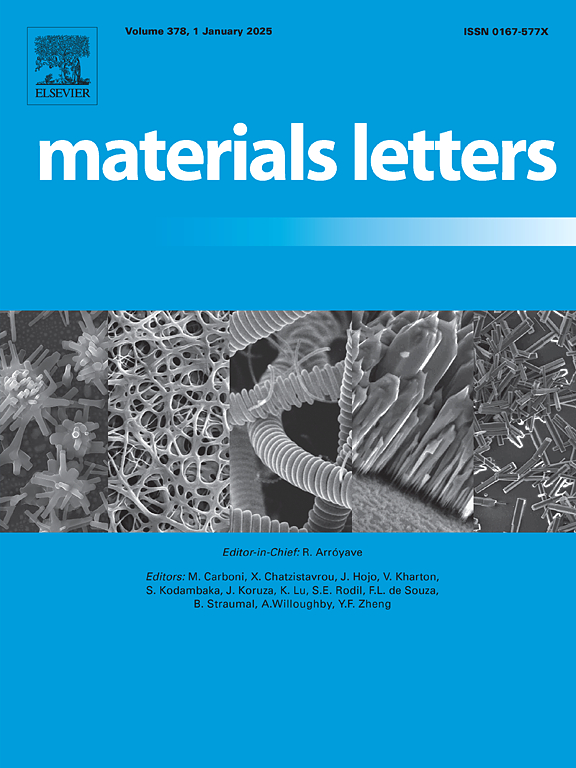以二甲亚砜为溶剂合成Na3SbS4固体电解质
IF 2.7
4区 材料科学
Q3 MATERIALS SCIENCE, MULTIDISCIPLINARY
引用次数: 0
摘要
全固态电池电解质的溶液合成作为一种更有效、可扩展的替代方法,受到了广泛的关注。四硫锑酸钠Na3SbS4是一种很有前途的全固态钠离子电池电解质。首次采用二甲亚砜溶剂作为反应介质。Na3SbS4粉体由不规则颗粒凝聚而成,室温下na离子电导率为2.74·10−4 S/cm,活化能低至0.26 eV。目前使用二甲亚砜溶剂的路线将是生产高性能固体电解质的另一种方法。本文章由计算机程序翻译,如有差异,请以英文原文为准。
Synthesis of Na3SbS4 solid electrolyte from dimethyl sulfoxide solvent
As a more effective and scalable substitute for conventional solid-state syntheses, solution synthesis of electrolytes for all solid-state batteries attracts a lot of attention. Sodium tetrathioantimonate Na3SbS4 is a promising solid electrolyte (SE) for all-solid-state sodium ion batteries. Dimethyl sulfoxide solvent was used for the first time as a reaction medium. The Na3SbS4 powder is made of agglomerated irregular particles, and exhibits a Na-ionic conductivity at room temperature of 2.74·10−4 S/cm coupled with a low activation energy of 0.26 eV. The current route using dimethyl sulfoxide solvent would be an alternative approach for the production of high-performance solid electrolytes.
求助全文
通过发布文献求助,成功后即可免费获取论文全文。
去求助
来源期刊

Materials Letters
工程技术-材料科学:综合
CiteScore
5.60
自引率
3.30%
发文量
1948
审稿时长
50 days
期刊介绍:
Materials Letters has an open access mirror journal Materials Letters: X, sharing the same aims and scope, editorial team, submission system and rigorous peer review.
Materials Letters is dedicated to publishing novel, cutting edge reports of broad interest to the materials community. The journal provides a forum for materials scientists and engineers, physicists, and chemists to rapidly communicate on the most important topics in the field of materials.
Contributions include, but are not limited to, a variety of topics such as:
• Materials - Metals and alloys, amorphous solids, ceramics, composites, polymers, semiconductors
• Applications - Structural, opto-electronic, magnetic, medical, MEMS, sensors, smart
• Characterization - Analytical, microscopy, scanning probes, nanoscopic, optical, electrical, magnetic, acoustic, spectroscopic, diffraction
• Novel Materials - Micro and nanostructures (nanowires, nanotubes, nanoparticles), nanocomposites, thin films, superlattices, quantum dots.
• Processing - Crystal growth, thin film processing, sol-gel processing, mechanical processing, assembly, nanocrystalline processing.
• Properties - Mechanical, magnetic, optical, electrical, ferroelectric, thermal, interfacial, transport, thermodynamic
• Synthesis - Quenching, solid state, solidification, solution synthesis, vapor deposition, high pressure, explosive
 求助内容:
求助内容: 应助结果提醒方式:
应助结果提醒方式:


